When it comes to contemporary influential women, the name Maryam Firouz is one of the first that comes to mind.
Maryam Firouz is renowned not only for her origins and lineage, but also for her own accomplishments.
The daughter of a Qajar prince, she is considered to be an independent woman separate from her husband, Noruddin Kianori, the former secretary-general of the Tudeh Party.
Throughout a remarkable life marked by numerous challenges and hardships, Maryam solidified her position as an influential woman in Iran. Being associated with her or having a connection to her is considered an honor by many.
Maryam was born in the city of Kermanshah in 1913 to a prominent Qajar family. She was the eldest daughter of Abdul-Hossein Farmanfarmaiyan, also known as Abdul-Hossein Mirza Farmanfarma, who served as prime minister under Ahmed Shah, the last Qajar king.
Her older brother, Firouz Nusrat-doleh, gained fame as a foreign minister. Another brother, Abdul Aziz Farmanfarmaiyan, is the architect of Tehran’s Azadi Stadium. He also played a significant role in establishing Iran's engineering system.
Eskandar Firouz, her other brother, became the first head of Iran's Environmental Protection Organization.
Maryam and her younger sister Setareh tied their names to movements that challenged the patriarchal system. Setareh earned a national title for her social works in Iran and also secured a place among influential women in the United States. Meanwhile, Maryam fought tirelessly to establish equality between men and women.
During her childhood, Maryam had the opportunity to attend some of the finest schools and received a solid education.
In 1929, she graduated from Jandark School, which was overseen by Christian nuns. The school's environment, where Assyrians, Armenians and other Christian teenagers received education, exposed her to different religious experiences.
Moreover, the school incorporated the French education program alongside teachings in Persian and Armenian languages for the Armenian students. Maryam became familiar with concepts stemming from the 1789 French Revolution and the European Enlightenment.
Against Maryam's wishes, her father arranged her marriage at the age of 16 with Colonel Abbasqoli Esfandiari, the son of Mohtsham al-Saltaneh, a government minister.
Esfandiari hailed from the Esfandiari family of Mazandaran and studied at the prestigious French military academy of Saint-Cyr. The couple soon welcomed two children named Afsaneh and Afsar.
Maryam had larger aspirations than being a wife and a mother or adhering to the traditional family system.
When her father passed away in 1939, Maryam separated from her husband and returned to her late father's house, transforming it into a gathering place for predominantly leftist and socialist poets and writers who shared egalitarian ideas.
Having grown up in a privileged environment, Maryam considered inequalities to be unjustifiable.
She fell in love with Rahi Moa’eri, a poet and lyricist. Their relationship did not lead to marriage, historical accounts, biographies and the passion conveyed in Rahi Moa’eri's own words attest to the intensity of their love.
At that time, Maryam’s reputation far exceeded that of a noblewoman who hosted intellectuals. Tehran's female activists, many of whom leaned toward leftist ideologies, introduced her to other circles.
Rahi Moa’eri considered Maryam a staunch supporter who encouraged him to continue writing under the looming threat of censorship, using pseudonyms and contributing articles to newspapers.
Meanwhile, Maryam embarked on a fight against deeply-rooted inequalities.
She challenged her inherited social class position and decided to marry Noruddin Kianori, the leader of the Tudeh Party's youth wing.
Maryam embarked on a journey fraught with obstacles, treacherous valleys and perilous passes – a path marked by hardship, imprisonment, torture, displacement, but also resilience.
“At that time, Maryam was a 29-year-old woman, radiantly beautiful and captivating,” The family doctor wrote in his memoirs. “It is fair to say that she possessed both beauty and charm. Alongside her youthful freshness, balanced physique and innate allure, she was highly intelligent, knowledgeable, vivacious and full of life. She had received a fine education, including a thorough understanding of France and broad general knowledge. She was inquisitive, engaging in conversations, asking questions and understanding everything from every perspective. She was considered one of the most beautiful women in Tehran — a confidant, a companion, a free spirit, well-mannered, and meticulously adhering to social etiquette. She was an avid reader."
Maryam encountered Iraj Eskandari a few years after his release from prison. Eskandari was one of the 53 political prisoners arrested in 1937, during Reza Shah's rule, on charges of reading Marxist works and being "atheists."
They were sentenced to three to 10 years of imprisonment in Qasr prison. These prisoners, later known as the Group of 53, left their mark on Iran's culture, literature, art and political history. They also played a pivotal role in founding the Tudeh Party.
Maryam joined that party and consistently participated in its meetings, which were predominantly attended by male intellectuals at the time, stirring controversy among the nobility and the Qajar elite. Foreign publications began mentioning Maryam Firouz's name, referring to her as the "Red Prince," catapulting her fame beyond Iran’s borders.
Less than 10 years had passed since her marriage with Nuruddin Kianori when the republican and leftist movements were brutally suppressed by the coup d'état of August 15, 1953.
Iran’s new ruler, Mohammad Reza Shah, ordered the widespread arrest of nationalist and communist political activists. Some of those arrested received death sentences, leaving Maryam and her husband with no choice but to leave Iran and seek refuge in the Soviet Union in 1957. They had spent four years evading capture and living in constant fear. Two years later, they immigrated to East Germany to continue their activities.
During their exile, Maryam was sentenced to death in absentia. She was accused of serving as the intermediary between Mohammed Mossadegh, the then-prime minister and her cousin, and the Tudeh Party during the period between August 15 and the day of the coup.
Maryam and Noruddin did not return to Iran until after the 1979 revolution, which overthrew the Pahlavi monarchy.
In the final days leading up to the revolution, the Tudeh Party joined other parties and organizations in pledging allegiance to Ruhollah Khomeini.
However, the alliance did not sit well with Iraj Eskandari. With Noruddin Kianori now leading the Tudeh Party, a three-member committee was formed to draft the future constitution.
Despite her prominent role in the party at the time, Maryam faced severe criticism from other members due to her family background and was prevented from joining this committee.
Eskandari, a staunch opponent of religious figures, opposed his party's alliance with Khomeini. Kianori failed to understand Eskandari's harsh criticism and forced him to retract his statements. Eskandari eventually left Iran.
Nonetheless, Kianori did not find compliance from the Islamic government led by Khomeini. When he returned to Iran in May 1979 after 26 years of exile, he encountered a political environment that fell short of his expectations.
The onset of the Iran-Iraq war and strained relations between Tehran and the Soviet Union plunged the Tudeh Party into darkness. The party was declared illegal and its members were arrested.
Both Maryam and her husband Kianori were imprisoned, while other members faced execution. Maryam remained unwaveringly loyal to her cause while the two spent the remainder of their lives under house arrest..
On February 6, 1983, she was taken into custody again and subjected to torture along with more than 50 other party cadres. She was aged 70.
Maryam endured nine years of mental and physical torture in the solitary cells of the Islamic Republic.
“My wife Maryam was subjected to such severe whipping that even after seven years, the soles of her feet still ache at night when she sleeps,” her husband wrote in a letter to Supreme Leader Ali Khamenei in February 1990. “This was the only ‘legal’ form of torture, accompanied by various insults and the most vulgar language (prostitute, pimp and others). She was slapped and beaten to the extent that she lost hearing in her left ear. I remind you that she was a 70-year-old woman at the time."
Testimonies reveal that the officer who whipped Maryam was a fellow party member named Hasan Ghaempanah.
Sacrificing her life, wealth, health, youth, beauty, literacy and knowledge in pursuit of her goal, Maryam never ceased writing despite the repression and torture she faced.
She left behind numerous books, and extensive articles and books have been written about her.
Her name continues to resonate in the memories of both her supporters and opponents.
She lived for nearly 94 years and remained steadfast in her dream of an egalitarian world until her last day, when she peacefully closed her eyes forever on March 22, 2008.
Behesht Zahra Cemetery became her eternal resting place.
visit the accountability section
In this section of Iran Wire, you can contact the officials and launch your campaign for various problems













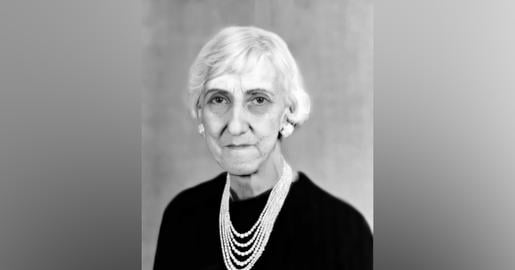


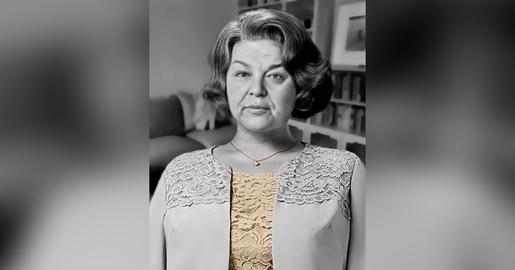
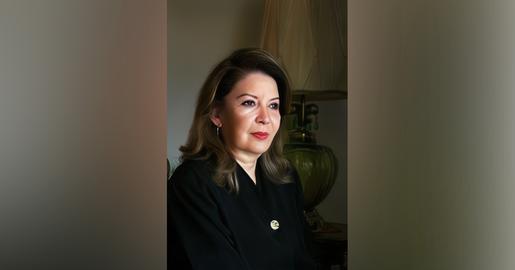

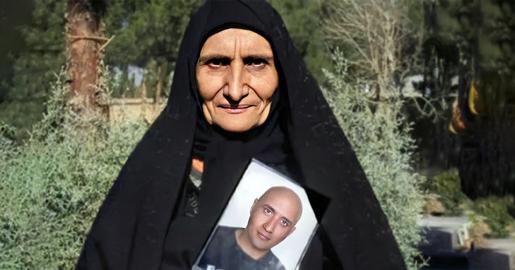

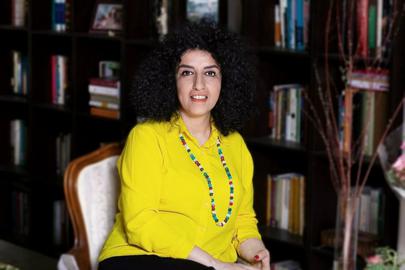

comments